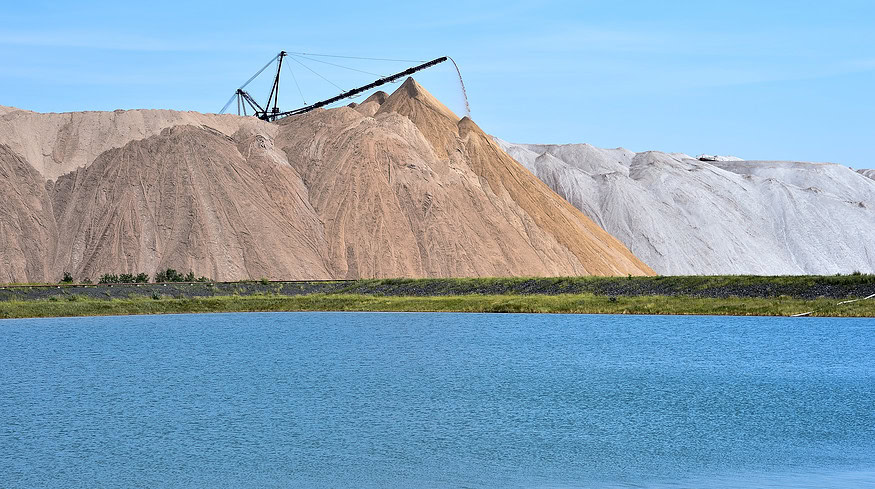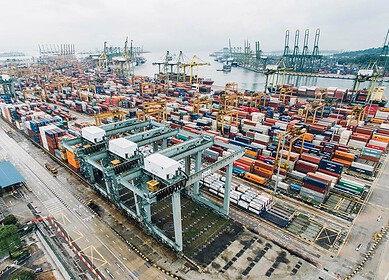Global potash market stabilizes: the impact of Russian and Belarusian exports

The global potash supply is gradually stabilizing after the disruptions caused by Russia’s invasion of Ukraine, as Russian and Belarusian producers circumvent Western sanctions by increasing exports to Asia and South America. These developments have put pressure on producers worldwide to adjust their output and mitigate the risks of oversupply.
In 2024, global potash production is forecasted to reach approximately 73 million metric tons. Russia is expected to export 12-13 million tons, while Belarus will contribute around 10 million tons, according to Julia Campbell, head of potash pricing at Argus. This return to pre-crisis levels follows a significant downturn in Russian exports immediately after the Ukraine conflict, which had resulted from logistical and financial challenges. However, many of these issues have since been alleviated.
Increased exports from Canada, Jordan, and Laos have further boosted global supply, contributing to price declines. Potash prices, which had surged to $1,000 per ton in mid-2022, are now below $300 per ton, reflecting weak demand. Analysts suggest that with prices approaching production costs, companies may be compelled to scale back output to stabilize the market.
Production adjustments and market reactions
Several major potash producers, including Germany’s K+S, have responded optimistically to the improving demand outlook. However, analysts warn that abundant global supply may cap any potential price increases, limiting earnings prospects. Morningstar analyst Seth Goldstein remarked that significant pricing benefits from global supply and trade shifts are unlikely, as most price volatility occurred in 2022 and 2023.
Canada, which has become the leading global exporter of potash, has seen its market share increase significantly since 2022. Conversely, Russia and Belarus experienced declines in their shares but are now recovering. Canada’s Nutrien, the world’s largest potash producer, paused its plans to expand production in August, citing unfavorable market conditions.
Geopolitical influences on trade routes
Russia’s exit from the Black Sea grain deal has forced Russian producers to find alternative export routes, particularly toward China and India. New rail connections have allowed them to increase shipments to Southeast Asia and South America. Belarusian exporters have similarly redirected shipments to bypass sanctions, offering potash at discounted prices.
Meanwhile, Swiss-based Eurochem has expanded its facilities in Russia to take advantage of the growing demand in Asia. Analysts warn that the muriate of potash (MOP) sector is experiencing an oversupply situation, and further reductions in output might be necessary to avoid severe price drops.
Impacts on agriculture
The decline in potash prices has improved fertilizer affordability. In the United States, while potash remains more expensive than pre-crisis levels, higher crop prices help offset costs. Conversely, Chinese farmers benefit from more affordable potash for wheat and maize production, though weak rice markets limit its use for that crop.
Brazil has seen potash prices return to 2019 levels, benefiting soybean and maize growers. Sustained low potash prices could keep fertilizer costs manageable, especially in regions with favorable exchange rates, improving crop production margins globally.
India-Russia fertilizer cooperation
Russia’s fertilizer exports to India have seen a significant boost in recent years, nearly tripling in 2022 to 4.3 million tons, largely driven by increased deliveries of phosphate-based fertilizers. By 2023, Russian fertilizers accounted for 25% of India’s total imports. However, Andrey Guryev, President of the Russian Fertilizers Producers Association, highlighted that existing trade barriers, including a 5% duty on imported fertilizers, remain an obstacle.
Guryev emphasized the need for a free-trade agreement between the Eurasian Economic Union and India to remove these barriers and further increase Russia’s fertilizer exports. Such an agreement would not only lower costs for Indian farmers but also improve access to environmentally friendly, high-performance fertilizers crucial for India’s agricultural sector.
As global potash markets recover from geopolitical disruptions, the long-term outlook remains uncertain. Producers must balance rising demand with the need to avoid excess supply that could push prices further downward. The market is expected to remain tight, benefiting farmers and agricultural producers across various regions, with demand anticipated to improve by 2025.
Enjoyed this story?
Every Monday, our subscribers get their hands on a digest of the most trending agriculture news. You can join them too!













Discussion0 comments